I have a confession to make.
It’s been years since I’ve had Cava. That’s not to say that it’s been years since I’ve had Spanish sparkling wines. I have, but they haven’t been from the Cava D.O. They’ve been from Cava’s Spanish market share competitors, Conca del Riu Anoia , Clàssic Penedès, and most recently Corpinnat. I wrote this post differentiating key rules and regulations between Cava and the others.
Maybe it was the Shiny Object Syndrome, or maybe it was the quality of the last few Cava I had. Maybe both. But what I do know is that I immensely enjoyed the wines from Cava’s Spanish competitors.
But if there’s one thing I’ve learned about the world of wine, it’s that it is a dynamic and ever evolving space. Therefore, I was looking forward to getting reacquainted with Cava when I was offered samples.
About Cava
Cava is an iconic Spanish sparkling wine made in the same traditional method as Champagne, but with grape varieties indigenous to its birthplace in Penedès, where In 1872 Jose Raventós of Codorníu introduced the traditional method to Spain, after returning from a trip to Champagne.
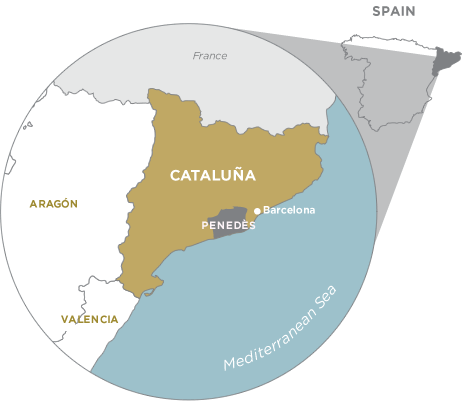
Cava, which means cellar in Spanish, refers to the underground caves where wines are stored and aged. Approximately 90% of Cava is produced in Catalonia, with 75% made in San Sadurní d’Anoia in Penedès. It is “most often comprised of Parellada, which gives fragrance and finesse; Macabeo, which gives freshness and acidity; and Xarel-lo, which provides body” explains Winebow. Other permitted Cava grape varieties include Chardonnay, Pinot Noir, Trepat, Garnacha Tinta, Monastrell, and Subirat Parent.
Aside from using different grape varieties, the essential difference between Champagne and Cava is that Cava is produced in a warmer climate, which yields riper grapes. Since there’s an inverse relationship between ripeness and acidity, Cava tends to have lower acidity than Champagne.
In terms of similarities between Champagne and Cava, since both produced using the traditional method of secondary fermentation in bottle, you’ll typically find yeasty aromas in both.
New Regulations
The Cava D.O., which was established in 1986, has recently undertaken the most extensive restructuring of its regulations ever.
The move was first unveiled in December 2019, in a bid to give consumers a guarantee of quality and provenance and guide them up the ladder to more premium wines, highlight the area’s regions, and differentiate Cava from its competitors.
Under the new regulations, new tiers of aged wines are being introduced, Cava de Guarda, for Cavas that have been aged for more than nine months, while wines aged for more than 18 months will be known as Cava de Guarda Superior. The grapes for this top tier must come from vines that are at least 10 years old, grown organically (with 5 years of transition), and have a specific qualitative yields of a maximum of 10,000 kg/ha. They also have to be produced separately to ensure traceability from the vineyard to the bottle, and have proof of the vintage on the label.
This long-aged category will include Cavas Reserva (which will be aged for a minimum of 18 months, up from 15 months), Gran Reserva (minimum 30 months of aging) and Cavas de Paraje Calificado, which come from a special plot and have been aged for a minimum of 36 months.
In April (2021), the Cava DO announced that all reserva, gran reserva and paraje calificado Cavas wines will be 100% organic by 2025.
In addition to the new top tiers, new geographical zones have been established, which will also now appear on the bottle from 1 January.
These comprise Comtats de Barcelona, which encompasses the Cavas from Catalonia (including sub-zones Valls d’Anoia-Foix, Serra de Mar, Conca del Gaia, Serra de Prades and Pla de Ponent), the Ebro Valley (including sub-zones Alto Ebro and Valle del Cierzo), Viñedos de Almendralejo, and Levante. (see map below)
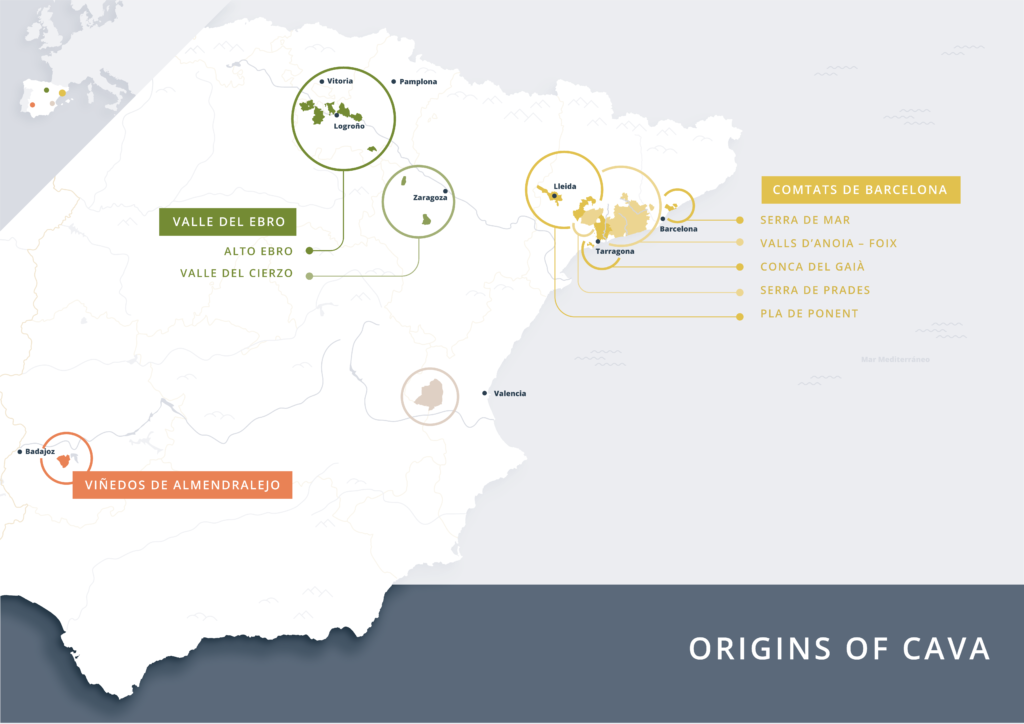
Wineries that press and vinify all their own products will also be able to include the term “Integral Producer” on the label.
The move aims to enhance the quality characteristics of Cava by providing consumers with more information about the product, and highlighting the work of winegrowers and winemakers explains the Drinks Business.
Wines Tasted
Disclosure: I received these wines as media samples. I received no compensation for this post, and all opinions presented are my own.
2012 Roger Goulart Cava Gran Reserva Brut
Founded in 1882, Roger Goulart is in the village of San Esteve, province of Barcelona. A quintessential Cava producer, Goulart pioneered the traditional method sparkling wine production in Spain. They source their fruit from 50 acres of mostly Xarel.lo, indigenous to Penedès and the main variety in their cuvée. Their sparkling wines benefit from long lees contact which is the common factor among the best sparkling wines worldwide. Their Gran Reservas are only disgorged under purchase order to provide their bubbles in their best condition.

Pale straw color with green apple, peach, lemon curd, bread dough, white flowers, and mixed roasted nut aromas. On the palate it’s medium-bodied and fresh with a delicate creamy mousse, and buoyant green apple, peach, lemon cream, a hint of lime and roasted hazelnut flavors with a very satisfying clean finish. Blend of ~60% Xarel-lo, 20% Macabeo, 20% Parellada. 12% abv|SRP – $19.99. Awesome quality for the price…especially for a traditional method sparkling wine aged for 6+ years!
Segura Viudas Cava Brut Reserva Heredad
Segura Viudas (pronounced she-GUR-a vi-YOU-das) was established as a commercial winery in 1959, but the estate that houses Segura Viudas dates back to the 11th century. The winery and vineyard are located in the heart of the Penedès wine region in Torrelavit, just outside of Barcelona.
At the end of the 19th Century, various Spanish indigenous grape varieties began to flourish in vineyards surrounding the property and were noted for their winemaking potential, especially to make traditional method sparkling wines known as cava. In the early 1980’s the estate of 445 acres known for its high quality cavas and still wines was purchased by the family owned Freixenet Group explains their website.
Its high quality Heredad bottling (see below), is its claim to fame.
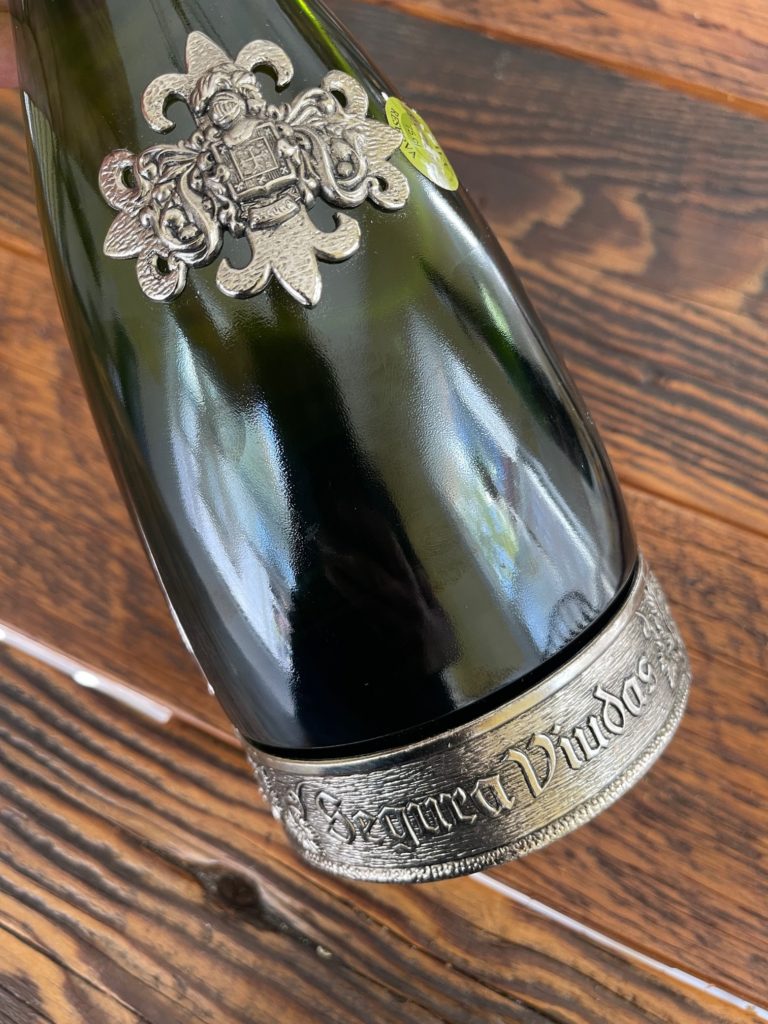
Pale straw color with aromatic pear, brioche, lemon verbena, honey and subtle flint aromas. On the palate, it’s medium-bodied, balanced and fresh with a delicate creamy mousse, and ripe pear, dried green apple, lemon curd, bread dough and lime flavors with an appealing hint of minerality. Blend of 75% Macabeo, 25% Chardonnay made from nine different wines, each of which was vinified in separate tanks. then ages sur lie a minimum of 24 months. 12% abv| SRP ~$20-$24
I’ve had this one a few time before, but it’s been a several years. I’d forgotten what a structured, wallet friendly, and wonderful wine it is!
Faustino Brut Reserva Rosado Cava
2021 marks the 160th anniversary of Bodegas Faustino, which was founded in 1861 by Eleuterio Martínez Arzok in Oyón, located in the province of Álava, in the Basque Country. Today, the fourth generation of the family is at the helm of the winery. The family is most renown for its “Faustino I”, which is most sold DOCa Rioja Gran Reserva in the world. Most of its vineyards are located in Rioja.
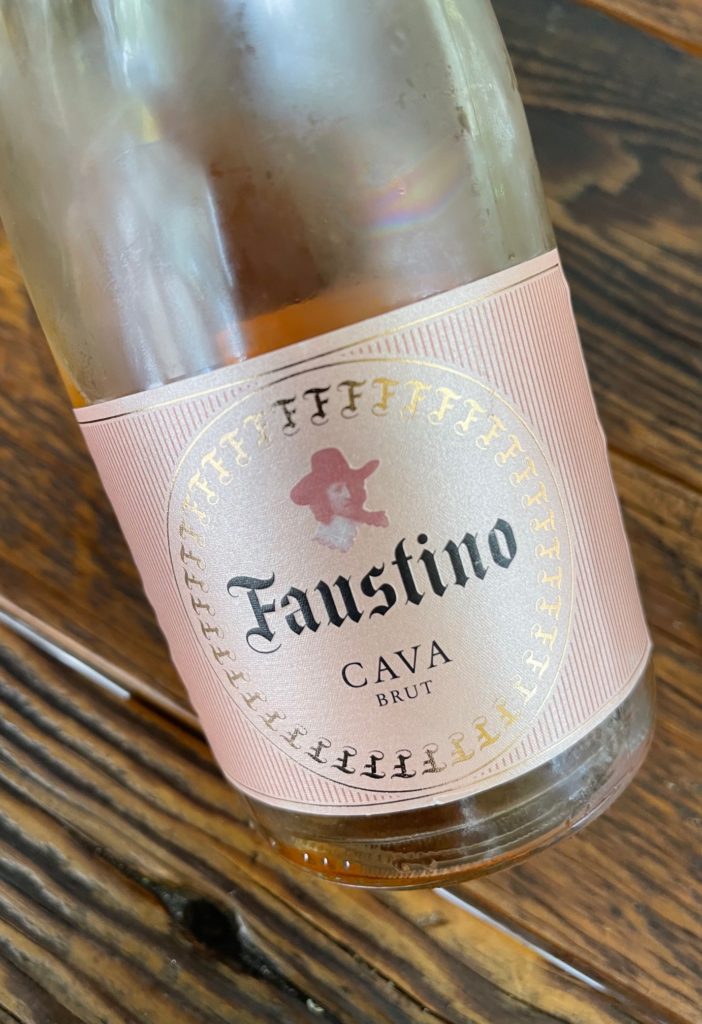
Pink salmon color with strawberry hard candy, raspberry, and toasted baguette aromas. On the palate, it’s medium-bodied and bright, tangy acidity with a moderately creamy mousse and ripe wild strawberry, raspberry, and subtle red currant flavors with a nuanced spice note. 100% Grenache. 12% abv|SRP – Ave $9 USD per Winesearcher.com. A delightful first experience with Cava Rosé.
After tasting these three Cava, I was inspired to make one of my favorite dishes – Paella. I used this recipe.
Given that sparkling wine is on my short list of the most food-friendly wines, I’m surprised I hadn’t tried Paella with any sort of sparkling wine before!
All three of the wines paired very well with the Paella, though each in a different way. The Roger Goulart complemented the sweetness of the seafood (my favorite to pair). On the other hand, the Segura Viudas seems to bring out the savory notes in the the dish. Finally, I thought the Faustino complemented the chorizo beautifully.
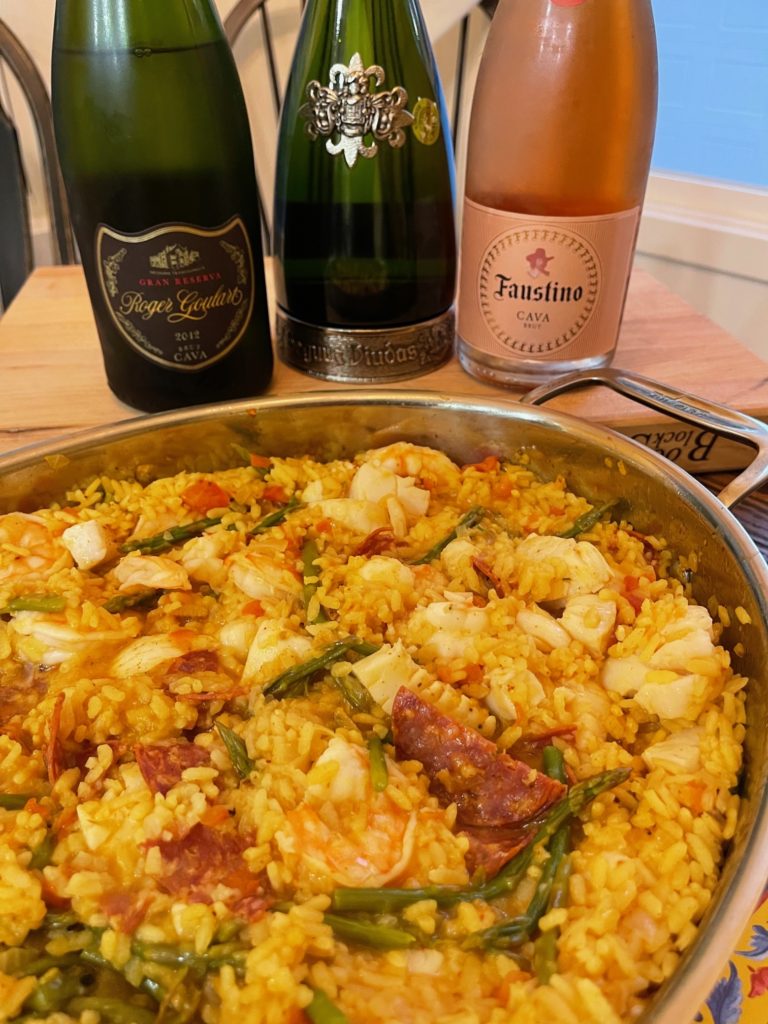
It was delicious fun getting reacquainted with Cava! It’s great to see the new regulations regarding geographical zones, aging, labeling and organic farming. I feel like to some degree, Cava had come to be perceived by many to be mediocre sparkling wine.
I believe the new regulations will provide the transparency today’s savvy consumers demand regarding quality and provenance. Kudos to the Cava D.O. for seeking opportunities to highlight and position their wines as high quality brands.
________________________________________________________________________
Follow me on Twitter, Facebook, and Instagram and for all things wine. As a wino with latent foodie tendencies, you’ll also find plenty of food and wine pairings, and wine related travel stuff! Become a fan and join ENOFYLZ Wine Blog on Facebook. Cheers!
Copyright Notice: This entire site is Copyrighted 2010-2021. All Rights Reserved. No unauthorized copying of any section of this site is permitted. If you wish to use any part of this site, contact me. For information on Copyright Law, see the official U.S. Copyright Office home page.